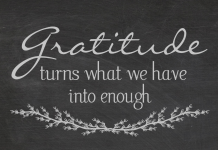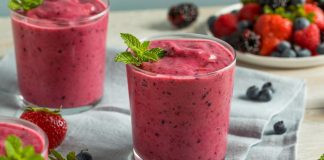Lately, I feel like I’d need to get a Ph.D. to understand the labels on my food. Grocery store jargon has gotten out of control. What does any of it actually mean? And how do I make the best purchases for the sake of my family and the planet?
Real or All Natural:
I see this one all too often: Made with REAL cheese!
Ok, but what is real cheese, and who gets to decide? Anything and anyone. There are no regulations on what can be called “real” or “natural.” So especially as the eco-conciouse movement is gaining momentum companies are capitalizing on that. Read the ingredients to find out what they call “real cheese” and make sure it aligns with what you consider “real cheese.”
USDA Certified Organic
There are strict, government mandated, guidelines that determine what can be labeled as organic. They are extremely long and confusingly worded. (I had to read them for a college class and that was inhumane.) Basically, organic means that there are limits on what pesticides, fertilizers, and hormones can be used. When it comes to livestock, organic animals are required to have access to the outdoors. Generally, organic is considered a better option for human/environmental well-being than conventional farming. Unfortunately the process of getting certified is complex and expensive, beyond what is practical for small-scale farmers.
Cage free
This means exactly what it sounds like: the egg laying hens were not kept in cages. That’s it. This doesn’t tell you wether or not they had room to move or access to the outdoors or what their diet might have contained.
Free range
Means that hens have continuous access to the outdoors, at least 2 square feet per-bird. However this doesn’t mean much, they may have small doors leading to a screened-in cement patio area that they are too nervous to enter. But that’s their range.
Pasture Raised
The most expensive! This is not regulated by the USDA but is “certified humane” by an independent animal welfare group. These birds get 108 square feet per-bird for roaming and have access to shelter. Certified Humane has this helpful resource for understanding egg labels.
Fair Trade
This tells you about the humans involved in producing your stuff. The principals are based on fair payment, good working conditions, no child labor, respect for the environment etc… You can read more at the World Fair Trade Organization website.
Non-GMO
GMO stands for a genetically modified organism. Unfortunately, this is contentious, and rampantly misunderstood issue. Many people are opposed to them on the moral grounds that humans don’t have the right to be messing around with the genetic codes of other living beings. Other people are proponents of GMO’s on the basis that modified crops provide more bountiful harvests, which would help reduce global malnutrition. Finding reliable information on this topic is challenging but generally not very many GMO crops are on the market and most of what is labeled as “non-GMO” wouldn’t involve any modified crops anyway. However, genetic modification allows large agribusiness to patent the genetic codes on their seeds and then sue small farmers for growing patented seeds, even when the seeds may have blown over from a neighboring field. Regardless of how you feel about GMO’s they have been detrimental to small-scale farmers.
Grass Fed
I was at the grocery store once with my mother and she asked the clerk where she could find grass fed beef. The poor gentleman looked so confused and said: “don’t all cows eat grass?”
The answer is yes, well they should.
Unfortunately, here in the US, we have a huge surplus of corn because corn is highly subsidized. Farmers know they can make a profit growing corn so they all grow corn. The solution to the surplus is to feed corn to animals who actually don’t eat it. So most livestock animals are fed highly-processed corn-based diets. Which is obviously pretty detrimental to their health. Grass-fed meat is more expensive because it doesn’t benefit from the corn subsidy. But grass-fed cows are happier cows and provide more nutrient dense meat too.
What’s the BEST option?
Buy from a farmer you can talk to. Skip the grocery store whenever possible and support our local community market, which takes place every Sunday from May 6- October 21st. We also have a community supported agriculture market which is open year round. And we have urban microfarms like Roots and the Eco-ranch.










